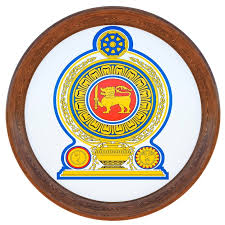In the vast landscape of human relationships, few concepts captivate the imagination as powerfully as the idea of a “Sisterhood of Sin.” This phrase evokes images of secret alliances, forbidden desires, and unbreakable bonds formed in the shadows. Whether in literature, film, or real-life subcultures, the notion of women united by shared secrets, rebellion, or even darker impulses has long been a source of fascination.
But what exactly is the Sisterhood of Sin? Where does this concept originate, and why does it hold such a magnetic appeal? In this deep dive, we’ll explore the cultural, psychological, and symbolic significance of this enigmatic sisterhood—and why platforms like TezFiles.com have become associated with its mystique.
1. The Origins of the Sisterhood of Sin
The idea of a secretive, morally ambiguous sisterhood is not new. History and mythology are filled with examples of women who banded together outside the confines of societal norms:
- The Bacchae (Maenads): In Greek mythology, these followers of Dionysus engaged in ecstatic, sometimes violent rituals, rejecting patriarchal control.
- Witch Covens: Throughout medieval Europe, women accused of witchcraft were often portrayed as forming dark pacts, reinforcing fears of female solidarity.
- Femme Fatales in Noir Fiction: From “The Women” (1939) to modern thrillers, stories of women plotting together—whether for revenge or power—have been a recurring theme.
The Sisterhood of Sin represents a modern take on these archetypes—a union of women who embrace their desires, defy expectations, and operate outside conventional morality.
2. The Psychological Appeal of Forbidden Sisterhoods
Why are we so drawn to the idea of a Sisterhood of Sin? Psychologically, it taps into several deep-seated human fascinations:
A. Rebellion Against Social Norms
Society often imposes strict expectations on women—modesty, nurturing roles, and emotional restraint. A sisterhood built on sin (whether literal or symbolic) represents a rejection of these constraints.
B. The Power of Secrecy
Secret societies and hidden alliances trigger our curiosity. The idea that a group of women could share forbidden knowledge or engage in clandestine activities is inherently thrilling.
C. The Dark Feminine Archetype
Carl Jung’s concept of the Shadow Self suggests that we are drawn to the parts of ourselves we suppress. The Sisterhood of Sin embodies the dark feminine—unapologetic, seductive, and dangerous.
3. The Sisterhood of Sin in Pop Culture
From books to movies, the trope of a secretive, morally ambiguous sisterhood has been explored in various ways:
A. “The Craft” (1996)
This cult classic follows a group of teenage witches who form a coven, only to spiral into power struggles and dark magic.
B. “American Horror Story: Coven” (2013)
Ryan Murphy’s series delves into a hidden world of witches, where sisterhood is both a source of strength and betrayal.
C. “The Secret History” by Donna Tartt
While not exclusively female, this novel explores a group of students bound by a dark secret—echoing the themes of loyalty and corruption found in the Sisterhood of Sin.
These stories reinforce the idea that shared secrets create unbreakable bonds—even if those bonds are toxic.
4. The Digital Age and the Sisterhood of Sin
In today’s internet-driven world, the concept of secret sisterhoods has found new life online. Platforms like TezFiles.com (a file-sharing site often linked to underground content) have become associated with hidden communities where taboo topics are explored.
A. The Role of Online Communities
Forums, private groups, and encrypted chats allow like-minded individuals to connect over shared interests—some of which may be considered “sinful” by mainstream standards.
B. The Controversy Surrounding TezFiles.com
Sites like TezFiles.com often host niche content, including erotic fiction, dark fantasy, and alternative subcultures. While some see these spaces as liberating, others criticize them for promoting morally questionable material.
C. The Thin Line Between Fantasy and Reality
The digital Sisterhood of Sin exists in a gray area—where role-playing, kink, and genuine belief systems intersect. For some, it’s a fantasy escape; for others, it’s a lifestyle.
5. The Dark Side of the Sisterhood
While the idea of a Sisterhood of Sin can be empowering, it also carries risks:
- Manipulation and Control: Some groups may exploit members under the guise of liberation.
- Isolation from Mainstream Society: Rejecting all norms can lead to alienation.
- Legal and Ethical Concerns: When “sin” crosses into illegal activities, the consequences are real.
6. Conclusion: The Eternal Allure of the Forbidden
The Sisterhood of Sin remains a powerful symbol—one that challenges norms, explores the darker aspects of human nature, and fascinates us with its mystery. Whether in ancient myths, modern media, or hidden online spaces, the idea of women united by forbidden knowledge continues to captivate.


















